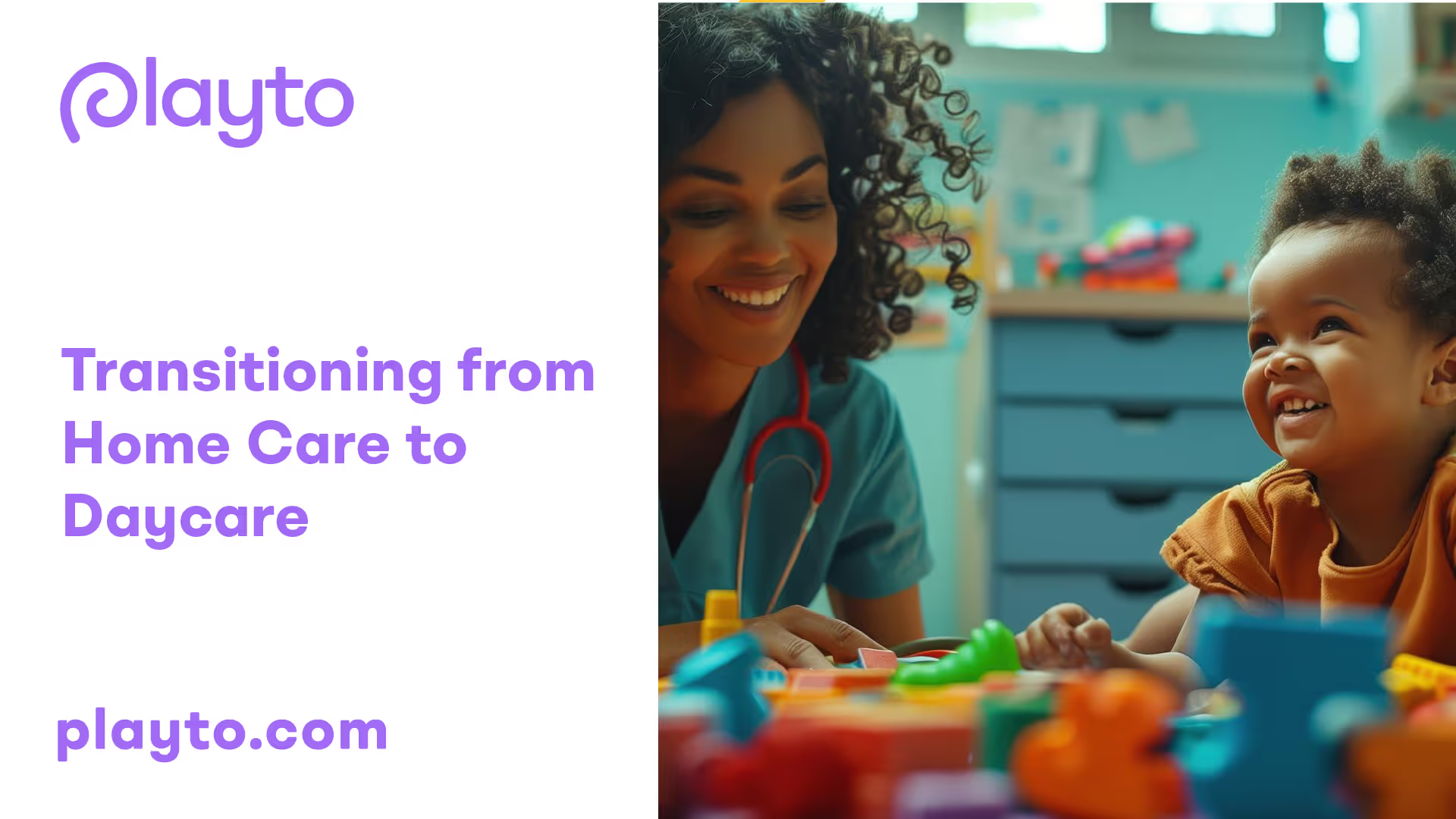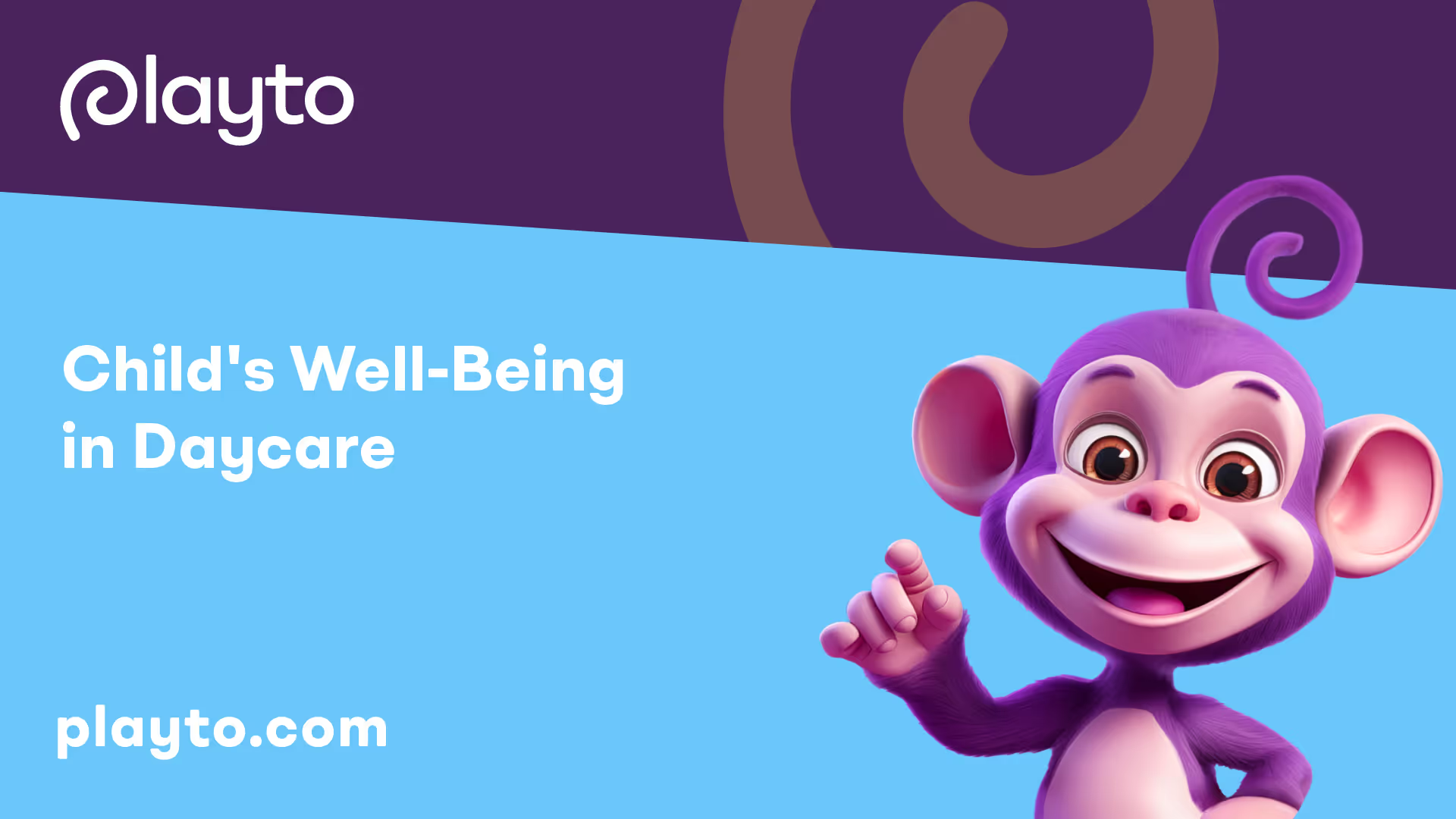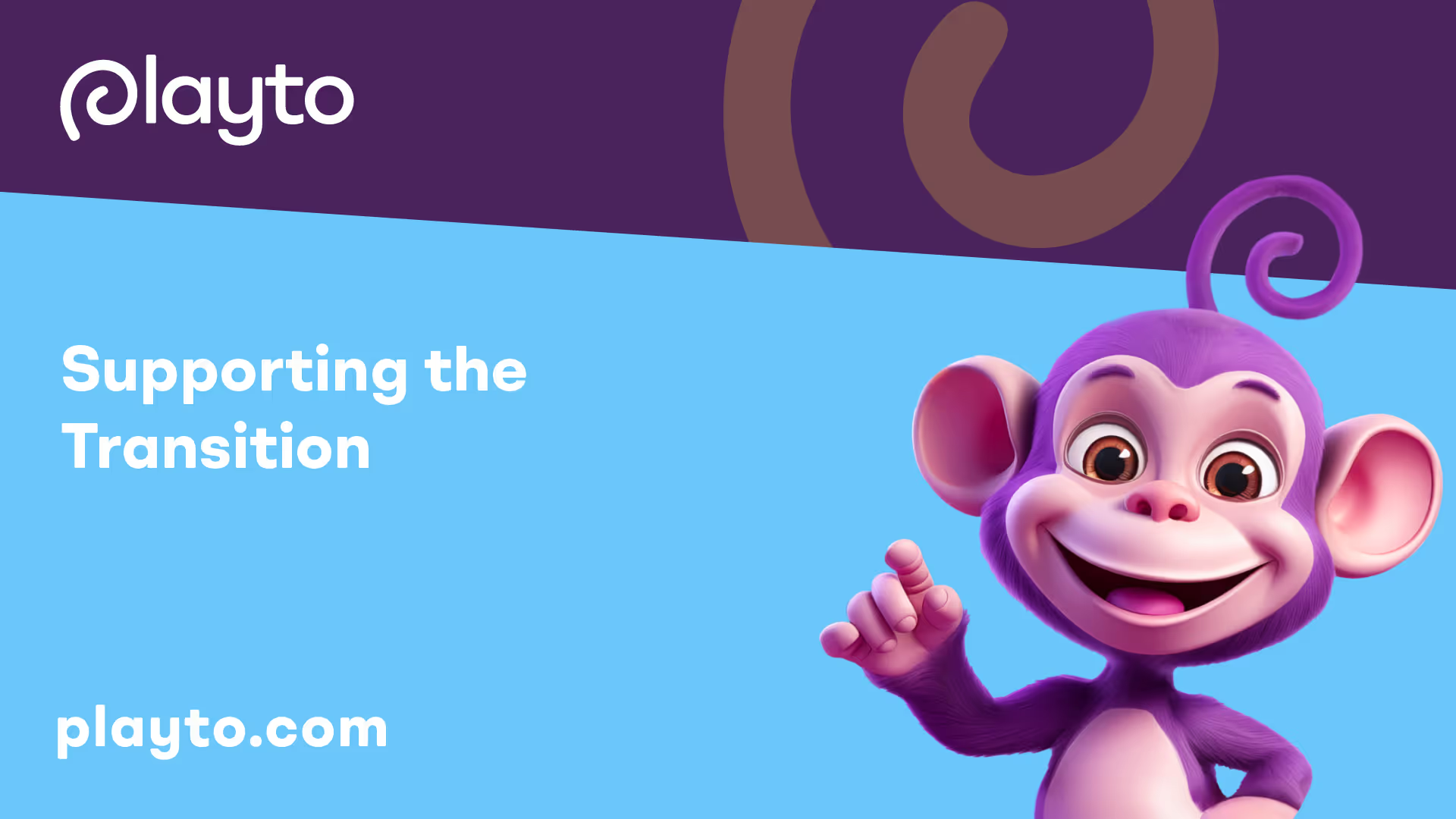Transitioning to Daycare
When transitioning from home care to daycare, it's important to consider the benefits of home-based care and the significance of the caregiver-child relationship. Understanding these aspects can help ease the transition and ensure a positive experience for both the child and the caregiver.

Benefits of Home-Based Care
Home-based care provides a unique and nurturing environment for children. Research suggests that the process quality of home-based care is generally higher than center-based care, with a greater emphasis on emotional and behavioral support and a closer caregiver-child relationship. This higher level of support and closeness contributes to children's overall well-being and reduces problem behavior when compared to center-based care.
Children in home-based care benefit from the individualized attention and care provided by a consistent caregiver. The smaller group size often found in home-based care allows for more one-on-one interaction, promoting a sense of security and trust between the child and caregiver. This close relationship is crucial for a successful transition from home care to daycare.
Importance of Caregiver-Child Relationship
The caregiver-child relationship plays a vital role in a child's well-being and social-emotional functioning, especially during the transition from home care to daycare. The quality of this relationship significantly impacts how children adjust to a new childcare setting and their overall functioning in that environment.
In home-based care, the caregiver-child relationship is often more pronounced due to the smaller group size and the consistent presence of the same caregiver. This relationship provides a secure base for the child, fostering trust, and promoting healthy social and emotional development. The strong bond between the caregiver and child helps ease the transition process, as the child feels safe and supported in the new daycare setting.
As a caregiver, it is essential to prioritize building a positive and nurturing relationship with the child. Engage in responsive and sensitive interactions, provide consistent care, and create a warm and supportive environment. These actions can help reduce anxiety and promote a smooth transition from home care to daycare.
By recognizing the benefits of home-based care and understanding the significance of the caregiver-child relationship, both children and caregivers can navigate the transition to daycare more effectively. Providing a nurturing and supportive environment during this transition period sets the stage for a positive daycare experience and supports the child's ongoing development.
Child's Well-Being in Daycare

When transitioning from home care to daycare, the well-being of a child becomes a primary concern. Understanding the level of emotional and behavioral support provided in both home-based care and daycare settings is crucial in ensuring a smooth transition for the child.
Emotional Support in Home-Based Care
Research suggests that home-based care tends to offer a higher level of emotional support compared to center-based care. In home-based care, children often develop close relationships with their caregivers due to the smaller group size and more individualized attention. This close bond between caregiver and child provides a secure and nurturing environment, promoting the emotional well-being of the child.
Behavioral Support in Home-Based Care
In addition to emotional support, home-based care also offers significant behavioral support for children transitioning from home care to daycare [1]. Caregivers in home-based settings often have the opportunity to focus on individualized behavior management strategies due to the smaller group size. This personalized approach helps children navigate their emotions and behaviors, providing them with the necessary support during the transition.
Research suggests that children in home-based care experience higher levels of well-being and exhibit fewer problem behaviors compared to those in center-based care. This highlights the potential benefits of home-based care for children transitioning to daycare.
During the transition from home care to daycare, it is essential to consider the emotional and behavioral support provided in the chosen daycare setting. Caregivers should ensure that the daycare environment fosters emotional well-being and offers appropriate behavior management strategies. This can help ease the child's adjustment to the new setting and promote a positive experience.
Remember that every child is unique, and their individual needs should be taken into account when selecting a daycare facility. By prioritizing emotional and behavioral support, caregivers can help ensure that the child's well-being is maintained during the transition from home care to daycare.
Process Quality in Child Care
When transitioning from home care to daycare, it is important to consider the process quality of child care. Process quality refers to the interactions, activities, and relationships that take place within the child care setting. The quality of these processes can have a significant impact on children's well-being and successful transition.
Process Quality Impact on Children
Research shows that the process quality of home-based care tends to be higher than center-based care. Home-based care often provides a higher level of emotional and behavioral support, as well as a closer caregiver-child relationship compared to center-based care. This higher process quality in home-based care has been associated with higher levels of children's well-being and fewer problem behaviors compared to center-based care.
In the context of transitioning from home care to daycare, process quality is especially important in a home-based care setting. The quality of interactions and relationships between caregivers and children can greatly influence how children adjust to the new environment and the level of support they receive during the transition.
Role of Process Quality in Transition
Process quality plays a crucial role in supporting children during the transition from home care to daycare. The quality of interactions and relationships between caregivers and children can help ease worries and anxieties, providing a sense of security and comfort. Positive caregiver-child relationships foster trust and emotional support, which are essential for children to feel safe and secure in their new environment.
In addition, process quality in child care settings can contribute to the development of social and emotional skills, as well as cognitive abilities. Engaging activities, stimulating environments, and responsive caregiving promote healthy development and facilitate the transition process.
To enhance process quality in child care, it is important to prioritize warm and nurturing relationships between caregivers and children. This involves providing opportunities for meaningful interactions, individualized attention, and building trust. Continuity of care, where children have consistent and stable relationships with their caregivers, can also contribute to higher process quality and smoother transitions [2].
By focusing on process quality in child care, both home-based and center-based, we can create nurturing and supportive environments for children transitioning from home care to daycare. This ensures that they receive the emotional and behavioral support they need during this important phase of their development.
Caregiver-Child Relationship
In the context of transitioning from home care to daycare, the caregiver-child relationship plays a significant role in shaping the well-being and functioning of children. This relationship is particularly important in home-based care settings, where the caregiver serves as a primary source of support and guidance for the child.
Significance in Home-Based Care
Research has shown that the caregiver-child relationship in home-based care is a significant moderator of children's well-being and social-emotional functioning. It acts as a vital component in the care ecology of preschool children transitioning from home care to daycare. In home-based care, the caregiver often provides individualized attention and nurturing, creating a secure attachment with the child. This close bond fosters a sense of trust, emotional security, and stability, which are crucial for a smooth transition to daycare.
Moderating Well-Being and Functioning
The quality of the caregiver-child relationship has been found to predict child functioning in both home-based and center-based care environments. This emphasizes the significance of this relationship in shaping the well-being and social-emotional functioning of children during the transition from home care to daycare [1]. When the caregiver-child relationship is positive and nurturing, children are more likely to feel secure, develop resilience, and exhibit positive social behaviors.
Maintaining continuity in the caregiver-child relationship during the transition is crucial. The familiarity and consistency of the primary caregiver can provide a sense of stability for the child, easing the adjustment process. Efforts should be made to ensure that the child's primary caregiver from home care is involved in the transition and remains a consistent presence in the child's daycare experience.
By recognizing the significance of the caregiver-child relationship in home-based care and understanding its impact on children's well-being and functioning, parents and caregivers can prioritize nurturing and maintaining this bond throughout the transition to daycare. This can be achieved through open communication, collaboration, and support between parents and caregivers. Additionally, providing opportunities for the child and caregiver to spend time together in the new daycare environment before the official transition can help foster a sense of familiarity and ease any anxieties.
For further guidance on supporting the transition from home care to daycare, refer to our article on strategies for a successful transition.
Supporting the Transition

When transitioning from home care to daycare, both children and caregivers may face challenges as they adjust to a new environment and build relationships with new caregivers. However, with proper support and preparation, the transition can be successful, reducing worries and anxiety for both parties.
Strategies for Successful Transition
To support a child's transition to daycare, caregivers can consider various strategies. These strategies may include:
- Finding and choosing high-quality child care programs that align with the family's needs and values. Printable family guides and local child care program finders can be helpful resources in this process.
- Allowing for a phased start by taking advantage of a formal transition period, which many centers offer from 2 weeks to a full month before a child starts full-time care. This phased start allows the child to gradually adapt to the new routine and environment.
- Starting with just a few days a week instead of full-time care initially. This approach helps the child feel less overwhelmed and gives them time to adjust to the new daycare setting before progressing to full-time childcare.
- Giving extra time for drop-off during the initial days of transitioning. This allows both the parent and child to separate gradually until they become more comfortable with the new routine [4].
- Bringing a few of the child's favorite items from home to the daycare center, such as toys, blankets, or snacks. These familiar items can provide comfort and a sense of familiarity in the new environment.
- Involving teachers in the child's daycare transition process. Teachers can offer special activities or toys, establish arrival rituals to make drop-offs less stressful, and provide scripts to help parents navigate tearful goodbyes [5].
- Phasing the child's transition into daycare by gradually increasing the time spent at the facility. This gradual approach allows for a smoother adjustment and can be customized based on the individual family's needs.
- Building trust with the child by setting realistic expectations about the daycare experience, outlining the daily schedule, and consistently applying rules and consequences. For teachers, establishing trust through consistent rule application is crucial [5].
Preparation for Child and Caregiver
Preparation is key when transitioning from home care to daycare. Both the child and caregiver can benefit from the following preparations:
- Openly discussing the upcoming transition with the child, using age-appropriate language and explanations to help them understand what to expect and why the change is happening.
- Visiting the daycare center together before the official start date, allowing the child to explore the new environment, meet the caregivers, and become familiar with the surroundings.
- Establishing a consistent routine at home that aligns with the daycare schedule, including regular meal times, nap times, and bedtime routines.
- Encouraging open communication between the caregiver and the daycare staff, providing information about the child's preferences, routines, and any special needs they may have.
- Seeking guidance and support from other parents who have already gone through a similar transition, as they can provide valuable insights and advice based on their experiences.
By implementing these strategies and adequately preparing both the child and caregiver, the transition from home care to daycare can be smoother and more successful. Remember, every child is unique, and it's important to be patient and understanding throughout the transition process.
Challenges in Transition
Transitioning from home care to daycare can present challenges for both children and caregivers. It involves adjusting to a new environment, schedule, and building relationships with new caregivers. However, with the right support and preparation, the transition can be successful, reducing worries and anxiety for both parties.
Adjustment to New Environment
One of the main challenges children face when transitioning to daycare is adjusting to a new environment. This involves adapting to unfamiliar surroundings, routines, and a different group of children. Toddlers, in particular, may experience insecurity and withdraw from social interactions initially. It is normal for children to take some time to feel comfortable in their new surroundings.
To help children adjust to the new environment, it is important for caregivers to provide a warm and nurturing atmosphere. Creating a predictable routine, maintaining consistency, and providing opportunities for children to explore and engage with their surroundings can help them feel more secure and ease their transition.
Building Relationships with Caregivers
Another challenge in transitioning to daycare is building relationships with new caregivers. For young children, the caregiver-child relationship plays a significant role in their well-being and development. Losing familiar caregivers can be tough for both children and their families.
It is crucial for caregivers in daycare settings to establish warm and secure relationships with the children in their care. This involves providing individualized attention, being responsive to their needs, and creating a sense of trust and connection. As children grow familiar with their new caregivers and form secure relationships over time, they are more likely to feel comfortable and thrive in the daycare environment.
Caregivers can also support families during this transition by maintaining open communication and involving parents in their child's daycare experience. Regular updates, sharing observations, and addressing any concerns or questions can help alleviate anxiety and build trust between caregivers and families.
While challenges may arise during the transition, it is important to remember that with time, patience, and support, children can adjust to their new daycare environment. By focusing on creating a nurturing and supportive atmosphere, building strong relationships with caregivers, and involving parents in the process, the transition can become a positive experience for both children and caregivers.
Daycare vs. Stay-at-Home
When considering the transition from home care to daycare, it's important to weigh the benefits of daycare against the advantages of stay-at-home parenting. Both options have their own unique aspects that can impact a child's development and the family's overall well-being.
Benefits of Daycare
Daycare provides more flexibility in parents' day-to-day lives, offering services like meals, snacks, and activities for kids, as well as a structured educational environment for children. Here are some key benefits of daycare:
- Educational Opportunities: Daycares typically offer preschool programs and educational activities to stimulate cognitive development and social learning environments for children. These programs can lay a solid foundation for a child's future academic success.
- Social Interaction: Interacting with other children in a daycare setting provides valuable opportunities for socialization and the development of essential social skills. Children learn to navigate relationships, share, and cooperate with their peers.
- Structured Environment: Daycares follow a daily routine and provide a structured environment that can help children develop a sense of stability and predictability. This structure can be beneficial in preparing them for future transitions, such as starting school.
- Professional Caregivers: Daycares employ trained and experienced caregivers who understand child development and can provide appropriate guidance and support. These caregivers can offer valuable insights and resources to parents.
Advantages of Stay-at-Home Parenting
On the other hand, stay-at-home parenting allows for more personal involvement in a child's day-to-day activities, providing a nurturing and secure environment while saving money on daycare costs. Here are some advantages of stay-at-home parenting:
- Personalized Attention: Stay-at-home parents have the freedom to tailor educational activities to their child's individual needs. They can provide personalized education and foster social interaction through day trips and other activities.
- Nurturing Environment: Stay-at-home parents can offer a nurturing and secure environment for their child. The close bond between parent and child can provide a strong foundation for emotional well-being and attachment.
- Flexibility: Stay-at-home parents have more flexibility in their daily routines and schedules. This can provide opportunities for spontaneous learning experiences and quality time spent together.
- Cost Savings: By staying at home, parents can save on daycare expenses. This can be particularly beneficial for families with multiple children.
It's important to note that both daycare and stay-at-home parenting have their challenges as well. Parent fatigue can be experienced in both settings, with daycare parents juggling drop-off and pick-up times, and stay-at-home parents managing day-to-day tasks and homeschooling [7]. Ultimately, the decision between daycare and stay-at-home parenting depends on the individual needs and circumstances of the child and the family.
To make an informed decision, it can be helpful to consider factors such as the child's age, temperament, socialization needs, parental work commitments, and financial considerations. Open communication with caregivers, educators, and other parents can provide valuable insights and support during this transition.
Continuity of Care
Continuity of care plays a vital role in the development and well-being of children as they transition from home care to daycare. This section explores the importance of continuity of care in child development and its impact on both children and caregivers.
Importance in Child Development
Continuity of care refers to the practice of keeping children and caregivers together for an extended period, often spanning the first three years of a child's life. This approach fosters close relationships between children and their primary caregivers, promoting a sense of security and stability for the child.
During the early years, children rely on consistent and nurturing relationships to develop a secure attachment. Continuity of care provides the opportunity for children to form a strong bond with their primary caregiver, who understands their individual needs, preferences, and temperament. This consistent and responsive caregiving helps children develop trust, emotional regulation, and healthy social-emotional skills.
Furthermore, continuity of care allows caregivers to gain a deep understanding of each child's unique development trajectory. Caregivers can observe and support children's growth, recognizing milestones and identifying any potential concerns early on. This continuity also enables caregivers to tailor their interactions and activities to meet each child's developmental needs effectively.
Impact on Children and Caregivers
Continuity of care not only benefits children but also has a positive impact on caregivers. When caregivers have the opportunity to build long-term relationships with children, they develop a deeper understanding of individual needs and preferences. This knowledge enhances their ability to provide personalized care and support, creating a nurturing and responsive environment.
For children, having consistent caregivers throughout their early years can reduce anxiety and promote a sense of belonging and trust. They can develop secure attachments, which serve as a foundation for healthy relationships and emotional well-being.
While continuity of care is crucial for optimal child development, it is not always easy to maintain in daycare settings. Factors such as staff turnover, limited resources, and administrative concerns can pose challenges to achieving continuity of care [2]. However, organizations and policymakers must prioritize the establishment of supportive environments that facilitate continuity of care.
By recognizing the importance of continuity of care and investing in the well-being and professional development of caregivers, daycare centers can create an environment that fosters positive relationships, promotes child development, and supports the overall success of the transition from home care to daycare.
To learn more about specific aspects of daycare, such as technology use, reading, and emergency preparedness, explore our articles on technology use in daycare: pros and cons, the role of technology in daycare learning, the importance of reading in daycare settings, and daycare emergency preparedness plans.
